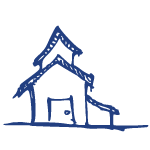Food Safety Records: Requirements Under Standard 3.2.2A Description
Food businesses that process potentially hazardous food and serve it ready-to-eat must comply with Standard 3.2.2A to demonstrate the safety of their food. This standard, enacted to uphold food safety standards across the industry, mandates that businesses actively monitor and manage key food safety risks associated with food temperature control, processing, and cleanliness. Let's delve deeper into what this means for food businesses and how they can ensure compliance.
Key Requirements of Standard 3.2.2A:
Monitoring and Managing Food Safety Risks: Standard 3.2.2A aims to ensure that food businesses are actively monitoring and managing critical food safety risks. These risks include maintaining proper food temperature control, ensuring safe food processing practices, and implementing effective cleaning and sanitising procedures. By addressing these aspects, businesses can uphold the safety of their food products.
Documentation and Record-Keeping: To comply with the standard, food businesses must maintain comprehensive records or demonstrate to authorised officers that they are effectively managing food safety risks. This includes records related to various stages of food handling, such as food receipt, storage, processing, display, and transport, along with cleaning and sanitising practices.
Temperature Control: Businesses must monitor and record temperatures at various stages, including during food receipt, storage, display, and transport. Proper temperature control is critical for preventing the growth of harmful bacteria and ensuring the safety of potentially hazardous foods.
Pathogen Reduction: During food processing, measures must be taken to reduce the risk of pathogens. Businesses must monitor and record pathogen reduction processes to minimize the risk of foodborne illnesses.
Minimising Processing Time: To prevent the proliferation of bacteria, food processing time must be minimised. Businesses should monitor and record the duration of food processing to ensure that it is conducted safely and efficiently.
Cooling and Reheating: Proper cooling and reheating procedures are essential for maintaining food safety. Businesses must monitor and record the cooling and reheating processes to prevent bacterial growth and ensure that food is safe for consumption.
Cleaning and Sanitising: Effective cleaning and sanitising practices are crucial for preventing cross-contamination and ensuring food safety. Businesses must monitor and record their cleaning and sanitizing activities to maintain a hygienic environment and prevent foodborne illnesses.
Ensuring Compliance and Safety:
To comply with Standard 3.2.2A and ensure the safety of their food products, food businesses must prioritise effective monitoring, documentation, and implementation of food safety measures. Additionally, businesses can benefit from enrolling their staff in accredited courses, such as Responsible Service of Alcohol (RSA), to enhance their understanding of food safety practices and regulations. By staying proactive and vigilant, food businesses can uphold the highest standards of food safety and protect the well-being of their customers.
Click here for example Food Safety Records.
The following templates are provided for information. It is not required under the food safety standards for businesses to use these templates.
· Template 1 — Supplier details
· Template 2 — Food receipt
· Template 3 — Cooling food
· Template 4 — Temperature record sheet
· Template 5 — Log for 2-hour/4-hour rule
· Template 6 — Cleaning and sanitising procedure
· Template 7 — Cleaning and sanitising record
You can download them here ![]() Resources | CFT International
Resources | CFT International
Share this story

Chat to one of our trainers
Our team are here to help with your questions











